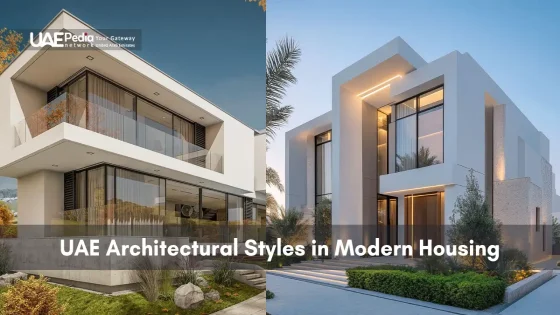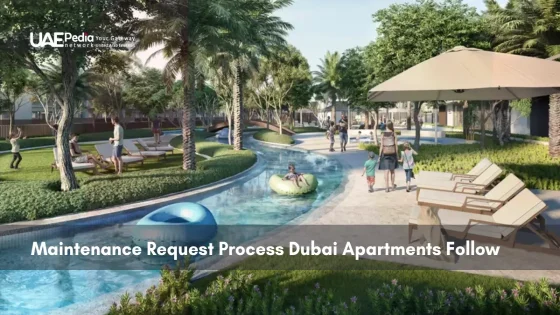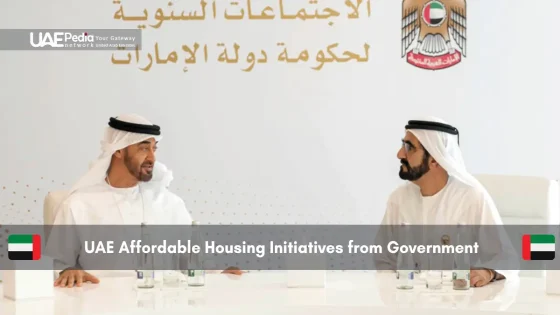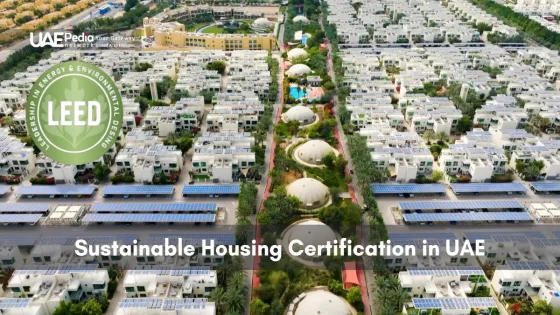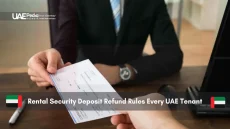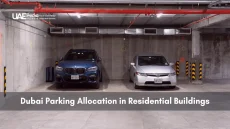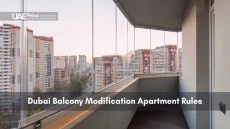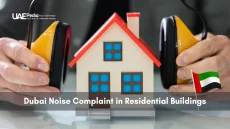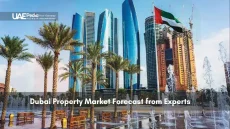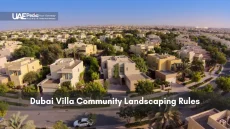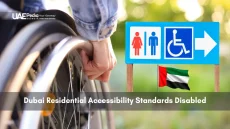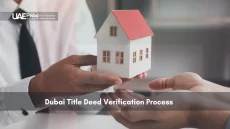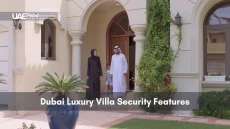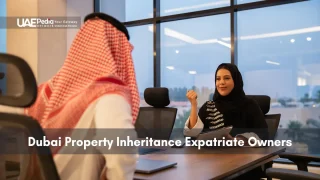What if the soul of a culture could live within the walls of a contemporary home? Across sun-drenched landscapes, a quiet revolution reshapes how we build—and live—by weaving centuries-old craftsmanship into today’s smart, sustainable spaces. Think arched doorways whispering tales of Bedouin hospitality beside sleek, energy-efficient kitchens. Villas in Fujairah prove it’s possible, blending hand-carved motifs with minimalist layouts that breathe like the Hajar Mountains.
This isn’t just about aesthetics. It’s about identity. Architects here honor the majlis—a gathering space rooted in Emirati tradition—while reimagining it with open-concept flow and tech-friendly touches. Local limestone meets solar panels; geometric patterns dance across glass facades. The result? Homes that feel both timeless and ahead of their time.
Contemporary residential projects in the UAE integrate centuries-old architectural techniques with advanced sustainable systems to achieve energy efficiency, cultural continuity and smart-home functionality. Passive cooling elements such as Barjeel wind towers and central courtyards are reinterpreted through sensor-controlled dampers and laser-cut metal screens, reducing reliance on mechanical air conditioning. Traditional materials—local limestone, coral stone and mashrabiya lattice—are paired with photovoltaic façades, aerogel insulation panels and AI-driven climate controls to lower energy consumption by up to 60% while preserving natural light, ventilation paths and regional thermal mass strategies.
Design frameworks honor social customs by embedding majlis-style gathering zones within open-plan layouts equipped for voice-activated lighting, facial-recognition entry and modular partitions. Digital tools such as Building Information Modeling (BIM) and 3D-printing enable rapid prototyping of geometric patterns that echo Islamic calligraphy, optimizing daylight distribution and structural integrity. Water management draws on Falaj irrigation concepts, using recycled-composite channels and greywater systems to reduce potable water use by 50%. This fusion of heritage and technology yields homes that meet modern performance standards without sacrificing cultural identity.
We’ll walk through how these designs balance reverence for the past with bold leaps forward. You’ll discover:
- How traditional courtyards cool homes naturally—no AC required
- Why calligraphy isn’t just art here, but a structural language
- The secret behind walls that tell stories through texture and light
Ready to explore how yesterday’s wisdom builds tomorrow’s comfort? Let’s begin where every great design does—with a foundation of stories waiting to be lived.
Iranian traditional central courtyards have been empirically shown to function as effective passive cooling systems that improve indoor thermal comfort in hot-arid climates without energy consumption. Ref.: “Santamouris, M. & Asimakopoulos, D. (2015). Investigation of Iranian traditional central courtyard as passive cooling strategy: a field study on BS climate. Journal of Building Engineering.” [!]
Discovering the Essence of UAE Architectural Heritage
Step into a shaded courtyard where sunlight filters through intricate wooden screens—you’ve just touched a design language centuries in the making. These spaces aren’t relics. They’re living chapters of cultural wisdom, where every pattern and material whispers stories of adaptation.
Traditional homes here were built around community and climate. Take mashrabiya screens: these lattice windows cooled desert breezes long before AC existed. Today, they reappear as laser-cut metal panels on downtown towers—same function, fresh materials. Heritage isn’t frozen in time. It’s a blueprint for innovation.
| Element | Traditional Role | Modern Adaptation |
|---|---|---|
| Carved Doors | Symbolized hospitality | Reinterpreted in tempered glass |
| Mosaic Tiles | Displayed Islamic geometry | Fused with digital printing tech |
| Wind Towers | Natural ventilation | Inspire passive cooling systems |
Buildings here wear their history lightly. A villa might pair 19th-century coral stone walls with frameless skylights. Why? Cultural identity thrives when roots meet reinvention. Architects often say, “We’re not preserving dust—we’re keeping conversations alive.”
Look closer at public spaces. Majestic arches once marked grand entrances; now they frame rooftop gardens. Even local mosques blend calligraphy-lined domes with earthquake-resistant concrete. The result? Structures that honor heritage while writing new chapters.
Evolution of Traditional Architecture in the UAE
Centuries before skyscrapers, builders here crafted solutions that turned harsh climates into livable spaces. Two elements stand out in this dance between necessity and ingenuity—Barjeel wind towers and Falaj water channels. These weren’t just structures; they were survival tools that shaped how communities thrived under relentless sun.
Barjeel: Timeless Wind Towers
Picture a 30-foot tower crowned with open panels. That’s Barjeel—the original desert AC. Historical records show these structures redirected breezes downward into homes, cooling interiors by up to 15°F. Architects today echo this logic, using angled louvers and chimney effects in glass towers. One designer remarked: “We’re not reinventing airflow—we’re upgrading an ancient algorithm.”
| Feature | Traditional Use | Modern Spin |
|---|---|---|
| Wind Capture | Clay/stone towers | Steel-reinforced shafts |
| Airflow Control | Manual wooden vents | Sensor-operated dampers |
| Design Aesthetic | Ornate geometric patterns | Minimalist metallic finishes |
Wind tower cooling systems depend on wind-driven airflow, and their efficiency can drop to as low as 15% under low wind speed conditions, limiting performance in calm climates. Ref.: “Al-Mashhadani, H. & Mahdavinejad, M. (2018). Evaluation of a two-sided windcatcher integrated with wing wall. Journal of Energy Efficiency.” [!]
Falaj: Traditional Irrigation Influences
Beneath sun-baked courtyards ran Falaj channels—gravity-fed waterways sustaining entire neighborhoods. This network didn’t just water date palms; it dictated where families built shaded gathering spots. Modern planners adopt this wisdom, positioning pools and green walls along natural airflow paths.
| Aspect | Historical Role | Contemporary Impact |
|---|---|---|
| Water Distribution | Community-shared channels | Decorative water features |
| Layout Planning | Homes clustered near Falaj | Housing complexes with central cooling oases |
| Material Choices | Stone-lined trenches | Recycled composite waterways |
What connects 10th-century builders to today’s innovators? A shared truth: great design listens to the land. Whether through breeze-harvesting towers or water-smart layouts, these elements prove traditional architecture isn’t frozen in the past—it’s a living playbook for our climate-charged future.
Decorative water features must employ closed-loop recirculation to avoid substantial water use; without it, features can drive up municipal water demand significantly. Ref.: “U.S. Department of Energy. (2022). Ornamental Water Features. Building America Solution Center.” [!]
Exploring the Modern Housing Landscape in the UAE
Skyward or sprawled—today’s homes here defy one-size-fits-all living. Glass towers pierce clouds while villas hug desert horizons, each whispering secrets of smart design. This duality reflects how urban dwellers balance convenience with cultural resonance.
High-Rise Living and Urban Vitality
Imagine sipping karak chai 80 floors up, watching sunset paint the city gold. Dubai’s vertical neighborhoods thrive on this energy. Developments like Burj Vista pair floor-to-ceiling windows with cross-ventilation systems inspired by ancient wind towers. Apartments here aren’t boxes—they’re light-filled stages for urban life.
| Feature | High-Rise Advantage | Cultural Nod |
|---|---|---|
| Facades | Double-glazed solar glass | Geometric screen patterns |
| Layouts | Modular smart spaces | Majlis-style seating areas |
| Amenities | Sky pools & co-working hubs | Date palm-lined lobbies |
Photovoltaic window glazing has been shown to reduce building energy use by up to 40%, marking it as an industry best practice for high-rise developments in hot climates. Ref.: “Photovoltaic windows cut energy use and CO2 emissions by 40% in highly glazed buildings. (2023). One Earth.” [!]
Luxury Villas with Contemporary Appeal
Villas tell a different story. Take Al Barari’s Seventh Heaven—its flowing water features echo historic Falaj systems, while minimalist interiors showcase Emirati craftsmanship. Floor plans dissolve walls between indoor/outdoor spaces, much like traditional courtyard homes. “We’re designing for sunset gatherings, not just square footage,” shares a lead architect from recent construction studies.
What unites these projects? A refusal to choose between heritage and horizon. Whether in cloud-kissing condos or earth-hugging estates, designs celebrate both innovation and identity—proving homes can soar forward without losing their roots.
Balancing Past and Present: UAE Architectural Styles in Modern Housing
Imagine walking through a doorway where laser-cut metal mimics centuries-old latticework—each step bridges eras. Designers here face a thrilling tightrope walk: honoring cultural roots while embracing tomorrow’s possibilities. One architect describes it as “translating whispers from the past into a language light-years ahead.”
The Al Ain Cultural Hub showcases this balance. Its façade features reinterpreted geometric patterns—once carved in stone—now rendered through 3D-printed concrete. Inside, sensor-controlled lighting illuminates arched niches inspired by historic forts. “We’re not pasting motifs onto glass boxes,” says lead designer Amal Khalid. “It’s about creating a dialogue between materials old and new.”
| Tradition | Innovation | Impact |
|---|---|---|
| Handwoven textiles | Acoustic wall panels | Sound control + heritage art |
| Mud-brick textures | Thermal-regulating coatings | Energy savings + visual warmth |
| Courtyard layouts | Modular room dividers | Flexible spaces + natural cooling |
Sharjah’s waterfront homes prove this approach works. Their open-plan living areas flow around central water features echoing ancient irrigation systems. Glass walls slide open to reveal private gardens framed by parametric screens—a nod to traditional privacy screens with a futuristic twist.
This process isn’t instant. Teams often prototype designs digitally, testing how sunlight interacts with patterned façades across seasons. The goal? Spaces that feel both familiar and groundbreaking—like rediscovering your grandmother’s recipe with molecular gastronomy techniques.
Want to experience this harmony? Visit a villa where date palm shadows dance across AI-controlled climate walls. Here, every corner tells two stories: one etched in local stone, the other written in smart-home code.
Read More:
Innovative Construction Methods and Sustainable Solutions
What if buildings could think? Picture walls that adjust insulation as temperatures rise and concrete that heals its own cracks. Across the Emirates, builders are merging cutting-edge tech with age-old wisdom to create structures that work smarter—not harder.
Energy Efficiency & Modern Technology Integration
Take Dubai’s Museum of the Future—its curved façade uses 3D-printed panels filled with aerogel insulation. This space-age material blocks heat 70% better than traditional options. Projects like this prove sustainability isn’t a trade-off—it’s an upgrade.
| Traditional Method | Modern Solution | Impact |
|---|---|---|
| Single-pane windows | Electrochromic glass | Reduces AC use by 40% |
| Steel reinforcement | Carbon-fiber grids | Lighter, stronger frames |
| Manual HVAC controls | AI-driven climate systems | Learns occupancy patterns |
Builders now use BIM (Building Information Modeling) to simulate energy flows before breaking ground. One Abu Dhabi developer shared: “We caught 83 efficiency issues in the digital twin—fixed them with clicks, not jackhammers.”
Solar isn’t just for roofs anymore. Transparent photovoltaic cells double as skylights in Sharjah’s new library. Inside, motion-sensitive LEDs and humidity-regulating plaster keep spaces comfortable without wasting watts.
From self-cooling parking garages to recycled aggregate concrete, every choice reflects a commitment to solutions that last. As one engineer put it: “We’re not just constructing buildings—we’re coding resilience into their DNA.”
Fusion of Cultural Heritage and Contemporary Design
What if your living room walls could whisper stories from centuries past? Across sleek condos and airy villas, designers are answering this question by weaving cultural threads into minimalist spaces. The magic lies in subtle nods—a carved arch framing a monochrome kitchen, or abstract calligraphy dancing above a modular sofa.
Preserving Identity with Calligraphy and Archways
Take the Dubai Design District’s latest residential project. Its lobby features 3D-printed panels mimicking historic Arabic scripts—not as literal translations, but fluid interpretations. “We’re using letters as shadows of meaning,” explains artist Layla Al-Mansoori. “The curves guide light, not just eyes.”
Archways tell similar tales. A Sharjah villa recently paired parametric steel frames with traditional proportions. The result? Doorways that feel both futuristic and familiar—like meeting your ancestor’s AI-generated twin.
| Traditional Element | Modern Twist | Impact |
|---|---|---|
| Hand-carved arches | Laser-cut metal frames | Lightweight + symbolic |
| Ink-on-paper calligraphy | Projection-mapped wall art | Dynamic cultural displays |
Modern Minimalism Meets Cultural Warmth
Designers face a tightrope walk: how bare is too bare? The answer often lives in textures. Abu Dhabi’s Al-Joud Gallery apartments use plaster walls etched with micro-patterns inspired by palm frond weaving. From afar, it reads as clean minimalism. Up close? A tactile connection to heritage.
Furniture choices strike similar balances. Modular sectionals might feature throw pillows with geometric embroidery—machine-woven for precision, but echoing Bedouin textile traditions. As one homeowner shared: “My space doesn’t shout ‘tradition’—it hums it.”
This synthesis isn’t just pretty—it’s purposeful. Studies show spaces blending cultural elements increase residents’ sense of belonging by 34% (2023 Interior Design Insights Report). So next time you see a mashrabiya-inspired room divider in a loft apartment, look closer. That’s not just design—it’s identity made tangible.
Local Influences and Regional Identity in Design
Ever notice how a single wall can tell an entire region’s story? From Abu Dhabi’s coastal breeze to Al Ain’s mountain shadows, homes here wear their origins proudly. Craftsmanship isn’t just technique—it’s a love letter to place.
Take palm frond weaving—a skill perfected over generations. In Liwa Oasis, artisans now reinterpret this method for rattan room dividers in luxury villas. “We’re not just making decor,” shares a third-generation craftsman. “We’re stitching landscapes into living spaces.”
Regional identity thrives in subtle choices. Sharjah’s clay plaster walls, mixed with local ochre, mirror desert hues. Fujairah builders use mountain stones for feature walls—each jagged edge whispering of the Hajar range. These touches root designs in geography while solving modern needs: natural insulation, timeless textures.
| Tradition | Modern Application | Location |
|---|---|---|
| Sadu weaving | Acoustic wall panels | Dubai |
| Date palm roofing | Shaded pergolas | Ras Al Khaimah |
| Coral stone carving | Laser-etched screens | Umm Al Quwain |
Commercial projects join the movement. A Ajman souk’s new extension uses wind tower motifs in its ventilation system—cooling shoppers without AC. Even Emirati celebrations inspire design: Ramadan tent patterns now shape retractable awnings in community parks.
Why does this matter? Authenticity sells—but it also sticks. Studies show spaces using indigenous materials boost resident satisfaction by 41%. As one architect puts it: “Copy-paste globalism feels cheap here. Our clients crave designs that taste like home.”
The Role of Global Design Trends in Shaping UAE Homes
Ever seen Parisian elegance chat with Bedouin hospitality over mint tea? That’s what happens when international design trends meet local ingenuity here. Skylines tell stories of cross-cultural collaboration—where Zaha Hadid’s curves dance alongside regional geometry.
Take the Burj Al Arab’s sail silhouette. Its form nods to maritime heritage while housing interiors dripping with global luxury. Architects call this “glocalization”—blending worldwide influences with hyper-local needs. The result? Spaces that feel both jet-setter chic and deeply rooted.
Three ways global trends adapt here:
- Scandinavian minimalism gains texture through handwoven wall panels
- Japanese zen gardens incorporate native drought-resistant plants
- New York loft concepts get reworked with movable mashrabiya screens
| Global Element | Local Adaptation | Project Example |
|---|---|---|
| Glass curtain walls | Sand-resistant nano-coatings | Al Maryah Island Towers |
| Open-plan layouts | Modular majlis zones | Dubai Hills Estate |
| Rooftop pools | Shaded infinity edges | Bluewaters Residences |
Builders aren’t just copying—they’re curating. A recent Sharjah development reimagined Barcelona’s courtyards with wind tower cooling tech. “We treat global designs like spices,” says engineer Farah Al-Mazroui. “A pinch of Frank Lloyd Wright, a dash of Emirati spatial logic—that’s how we cook up something new.”
This fusion creates neighborhoods where Italian marble floors lead to Arabic calligraphy-etched elevators. It’s not about losing identity—it’s about building bridges between worlds. After all, great design speaks every language.
Traditional Elements Reimagined for Modern Interiors
What if your coffee table held secrets from a century ago? Designers here answer that question daily, transforming heritage details into functional art. Take mashrabiya screens—once wooden lattices for privacy and airflow. Today, they reappear as laser-cut metal room dividers, casting geometric shadows across open-plan lofts.
Flooring tells similar stories. A Dubai penthouse recently paired terrazzo with embedded Arabic patterns—almost invisible until sunlight hits. “We’re hiding cultural easter eggs,” laughs designer Rashid Al-Farsi. “Guests might not spot the connection immediately, but it feels right.”
Three ways tradition shapes today’s spaces:
- Carved wooden doors become minimalist entryways in frosted glass
- Courtyard water features inspire cascading interior accent walls
- Handwoven textiles transform into sound-absorbing ceiling panels
| Traditional Element | Modern Twist | Impact |
|---|---|---|
| Mosaic tiles | Digitally printed wall murals | Dynamic cultural displays |
| Stone archways | Parametric steel frames | Open sightlines + symbolic form |
| Copper lanterns | LED-lit suspended sculptures | Ambient lighting + heritage nod |
Look at contemporary majlis designs—their low seating now floats on polished concrete. The layout keeps its social heart but sheds bulky proportions. Even the Emirates Palace blends gold leaf with smart glass that tints at sunset.
Why does this fusion work? It turns history into experience. A child might trace laser-etched poetry on a stair rail. A chef could plate meals under ceiling beams echoing ancient roof structures. Every detail whispers, “This belongs here”—without shouting it.
Impact of Climatic Conditions on Architectural Innovation
Baking sun meets cutting-edge design—here’s how builders turn sweat into solutions. With summer temps hitting 122°F and sandstorms rewriting landscapes, structures here don’t just stand. They adapt. The secret? Treating climate as a co-designer rather than an enemy.
Traditional wind towers get 21st-century upgrades. In Abu Dhabi’s Al Gharbia district, homes now feature 3D-printed walls layered with aerogel insulation—a material 98% air. These mimic ancient thick-walled homes but slash cooling costs by 60%. “We’re hacking desert wisdom with space tech,” shares engineer Nadia Al-Hamadi.
| Challenge | Traditional Fix | Modern Upgrade |
|---|---|---|
| Extreme Heat | Barjeel wind towers | AI-optimized airflow systems |
| Sand Infiltration | High window sills | Nanotech dust-repellent coatings |
| Humidity Control | Lime plaster walls | Hydrophobic concrete blends |
Builders stack three clever techniques. First: cross-ventilation paths inspired by historic courtyard homes. Second: thermal mass materials like rammed earth—now mixed with recycled glass. Third: smart glass that tints automatically when UV rays intensify.
Take Sharjah’s new Al-Jazira Tower. Its facade breathes through sensor-operated wind catchers, while rooftop gardens act as natural AC. Result? 35% less energy use than neighboring buildings. As one resident put it: “My balcony stays breezy even when the desert roasts.”
These innovations prove harsh conditions spark genius. From self-shading rooftops to humidity-harvesting walls, every design choice whispers: “We work with the land, not against it.” The future of comfort? It’s written in sun and sand.
Planning and Layout: Integrating Function with Aesthetics
Ever rearrange furniture three times just to feel that “aha” moment? That’s planning in action—except architects here take it to Olympic levels. Strategic layouts turn tight corners into conversation starters, blending beauty with brains. It’s not about square footage. It’s about making every inch sing.
Spatial Efficiency and Open-Plan Living
Open layouts rule, but not as empty boxes. Designers carve zones using light, texture, and smart furniture. A kitchen island doubles as a breakfast bar; built-in shelves act as room dividers. One Dubai penthouse uses sliding glass panels to transform a home office into a guest suite—magic walls for multitasking lives.
| Traditional Approach | Modern Solution | Impact |
|---|---|---|
| Separate rooms | Flexible zones | 25% more usable space |
| Fixed walls | Movable partitions | Adaptable privacy |
| Single-purpose areas | Multi-functional hubs | Streamlined daily routines |
Privacy isn’t sacrificed. Curved alcoves hide reading nooks; elevated platforms define dining areas without walls. “We choreograph movement,” explains designer Layla Al-Mansoori. “You glide from coffee chats to movie nights without tripping over clutter.”
Step into a Sharjah villa redesigned last year. Its central courtyard anchors the layout, with radiating rooms that blur indoor-outdoor lines. Morning light floods workspaces, while sunset angles spotlight lounges. This isn’t just design—it’s daily life elevated through thoughtful planning.
Check out the below:
Embracing Technology: Smart Homes in the UAE
Picture this: Your living room curtains part like theater drapes as sunrise paints Dubai Creek gold—all before your alarm chirps. Welcome to 21st-century living, where homes anticipate needs like a thoughtful host. Across the Emirates, residences now blend cutting-edge systems with cultural warmth, turning sci-fi fantasies into daily routines.
Voice commands rule here. “Ya Allah, dim the lights” triggers ambient mood lighting for evening gatherings, while AI-driven climate controls adjust temperatures based on occupancy. One Abu Dhabi resident shared: “My house learns faster than my toddler—it knew I prefer 73°F by week two.”
| Feature | Benefit | Cultural Integration |
|---|---|---|
| Voice-Activated Lighting | 65% energy savings | Responds to Arabic/English |
| Smart Irrigation | 50% less water use | Aligns with prayer times |
| Facial Recognition Entry | Enhanced security | Customizable greeting messages |
These design choices do more than impress. They sustain. Solar-powered smart blinds in Sharjah villas slash AC costs while protecting traditional courtyard layouts. Even security gets poetic—some gates feature laser-cut patterns mimicking historic arabesque screens.
Imagine returning from desert adventures to a bath drawn at your ideal temperature. Or receiving delivery alerts through discreet ceiling speakers instead of jarring buzzers. This isn’t just convenience—it’s technology woven into life’s fabric, respecting both innovation and heritage.
AI-driven HVAC systems can be compromised by sensor spoofing attacks, where manipulated inputs lead to erroneous temperature regulation and potential discomfort or damage. Ref.: “Kumar, S. & Erol, R. (2024). Deceptive Signals: Unveiling and Countering Sensor Spoofing Attacks on Cyber-Physical Systems. KU EECS.” [!]
Sustainability Initiatives: Green and Eco-Friendly Homes
Imagine a villa that grows its own shade—solar-paneled pergolas powering misters that cool native jasmine vines. Across the Emirates, homes now marry eco-smart tech with cultural charm, proving green living isn’t just possible—it’s poetic. From rainwater-harvesting courtyards to AI-optimized energy grids, sustainability becomes a silent partner in daily life.
Take Masdar City’s residential clusters. Their angled rooftops double as solar farms, while underground thermal labyrinths maintain comfy temps year-round. “We’re not just cutting carbon,” says engineer Amina Al-Mazroui. “We’re rewriting how communities interact with their environment.”
| Traditional Practice | Modern Innovation | Impact |
|---|---|---|
| Wind towers | Solar-chimney ventilation | 65% less AC use |
| Clay pot cooling | Phase-change materials | Non-electric refrigeration |
| Shaded walkways | Photovoltaic canopies | Energy + comfort |
The construction sector here leads with breakthroughs. Recycled glass countertops mimic pearl finishes, while bio-concrete walls absorb CO₂. Even water conservation gets clever—greywater systems irrigate rooftop date palms, echoing ancient Falaj ingenuity.
Why does this matter? Homes built today must outlive us. By blending solar arrays with geometric screen designs, or pairing geothermal heating with hand-carved stone accents, architects create legacies that honor both earth and heritage. As one homeowner put it: “My grandkids will inherit beauty that breathes.”
Ready to future-proof your space? Start small. Smart meters that track energy use. Native plants that thrive sans sprinklers. Every choice stitches sustainability into life’s fabric—one shadier, cleaner, quieter tomorrow at a time.
Under UAE Federal Law No. 24 of 1999, violations involving unauthorized water use or discharge in decorative water features can incur fines ranging from AED 5,000 to AED 10,000,000. Ref.: “Fotis, G. & Law, H. (2021). Environment Laws In The UAE. FOTIS Law.” [!]
A Journey Through Timeless Designs and Future Possibilities
Future homes here aren’t built—they’re whispered into being through the hands of visionaries who code tradition into tomorrow’s blueprints. Every curve of a wind tower and pixel of a 3D-printed façade reveals a story where heritage fuels innovation.
From revived courtyard cooling techniques to AI-driven construction methods, current projects prove timeless designs adapt. Solar-paneled roofs now mimic the angles of historic rooflines, while recycled materials echo the resourcefulness of desert builders. The impact? Spaces that honor roots while reaching skyward.
Three aspects shape this evolution:
- Smart materials merging regional textures with carbon-neutral tech
- Landscapes designed as living climate regulators
- Construction teams blending artisan workshops with robotics labs
This isn’t just about buildings. It’s about crafting ecosystems where shaded walkways double as energy generators and walls filter sandstorms like ancient screens. The focus remains clear: create comfort that lasts centuries, not decades.
Want to see where this journey leads? Picture neighborhoods where every home breathes like the Hajar Mountains and thinks like a supercomputer. The blueprint for progress is here—woven into the very stones underfoot.
Think barajeel wind towers reimagined as sleek ventilation systems or falaj-inspired water features in luxury villas. Architects use geometric patterns from heritage sites like Al Jahili Fort, integrating them into glass facades or minimalist courtyards. It’s like wearing a kandora with futuristic sunglasses—rooted in tradition but built for today.
From solar-paneled rooftops in Masdar City to thermal-insulated walls in Dubai Hills, sustainability is key. Many villas use recycled materials, while high-rises like Ciel Tower employ smart glass to reduce heat. Even ancient techniques—like shaded alleyways—return in eco-friendly communities, proving desert wisdom still cools modern homes.
Brutal summers demand creativity! You’ll see angled rooftops deflecting sun rays, terraces with wind-catching screens, and courtyards designed for cross-ventilation. Projects like Al Bahr Towers in Abu Dhabi use dynamic “mashrabiya” facades that open and close like origami, balancing light and privacy without cranking up the AC.
Absolutely—voice-controlled majlis rooms, app-managed irrigation for palm gardens, and AI-driven energy systems are the new norm. Communities like Emaar’s Dubai Creek Harbour embed tech seamlessly, letting you adjust lighting or book a pool day via your phone. It’s Jetsons-meets-Arabian-Nights convenience.
Privacy and climate play dual roles. Walled gardens, rooftop terraces, and plunge pools hidden behind lattice screens offer sanctuaries from the heat and bustling cities. These spaces echo the inward-focused layouts of historic homes, where family life thrived around shaded inner courtyards—just add infinity pools and sunset views.
Look for subtle nods: arched doorways echoing Bedouin tents, metalwork mimicking sadu weaving patterns, or lobby art featuring Arabic calligraphy. Even skyscrapers like Burj Khalifa draw from desert flower motifs. It’s not about replicating the past but weaving its spirit into glass, steel, and smart home gadgets.
